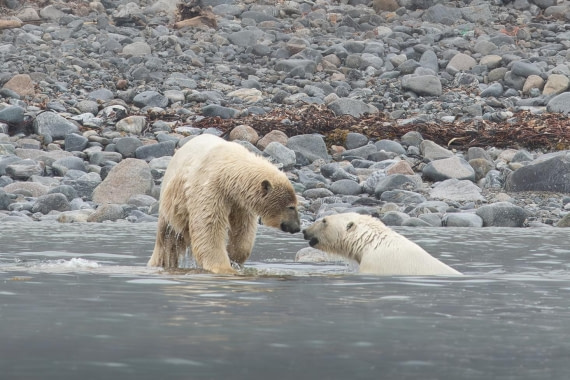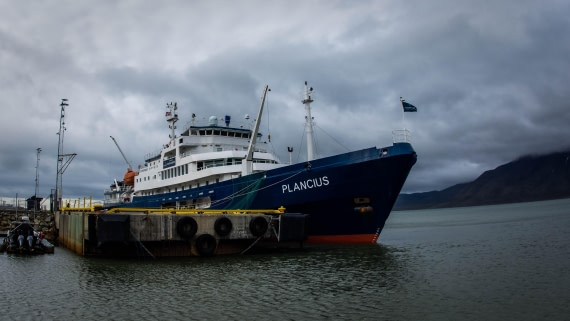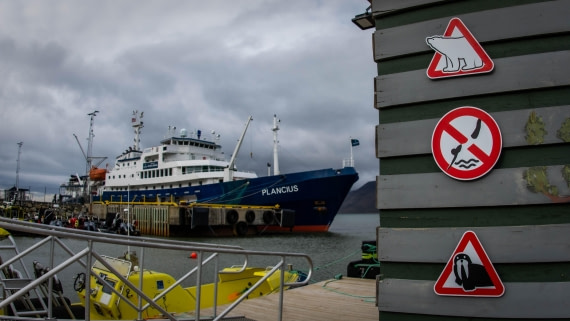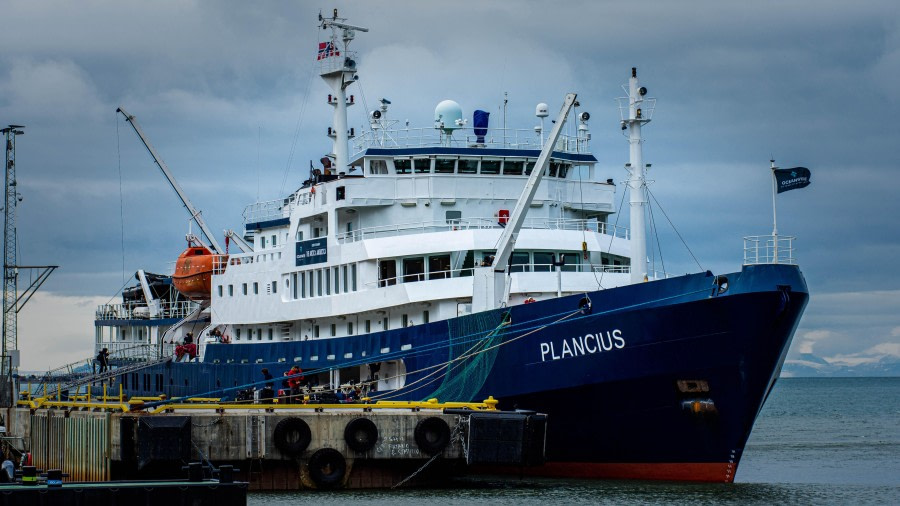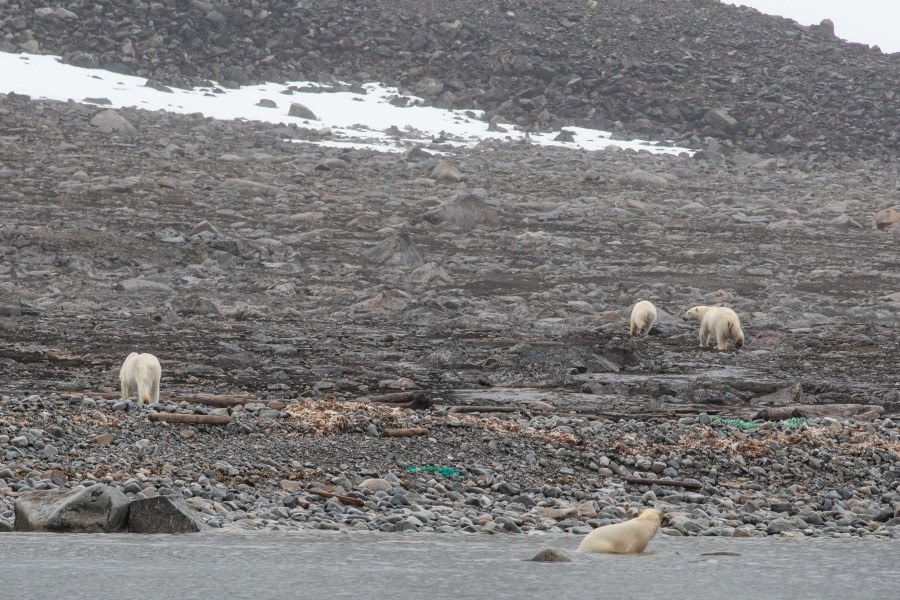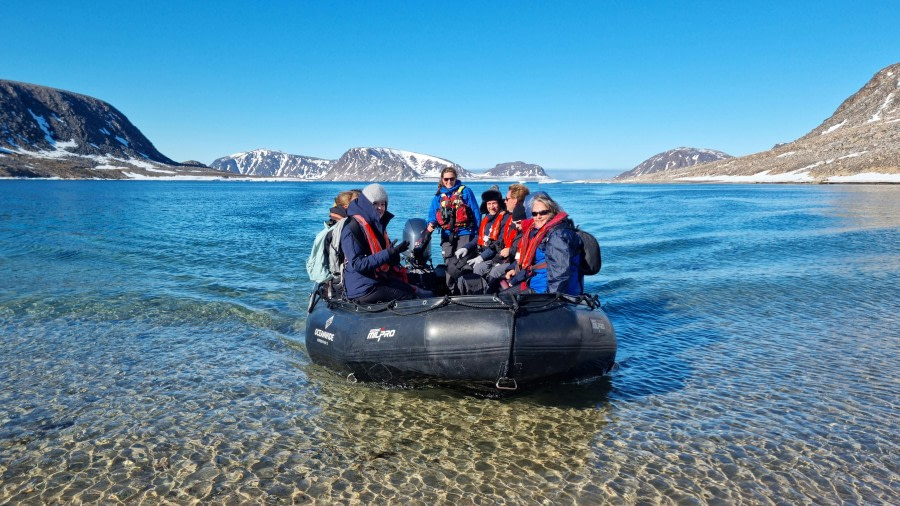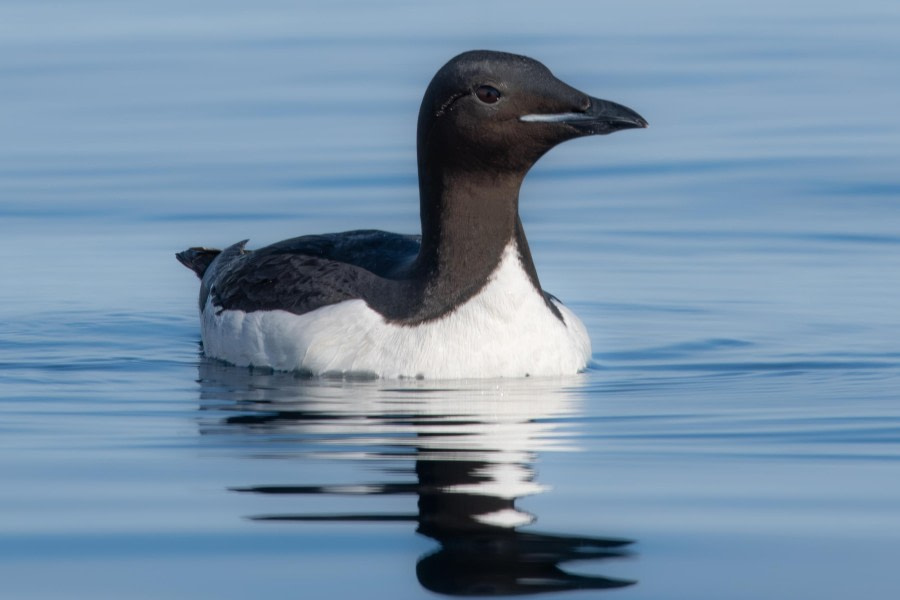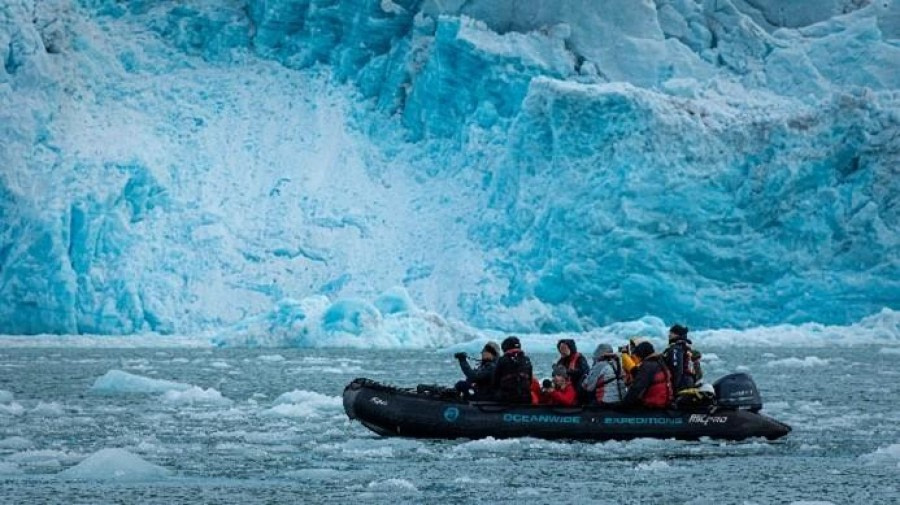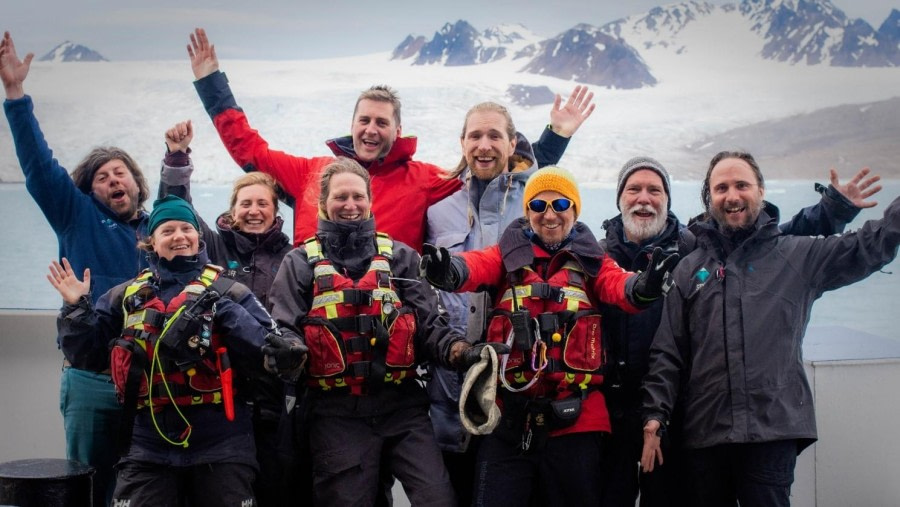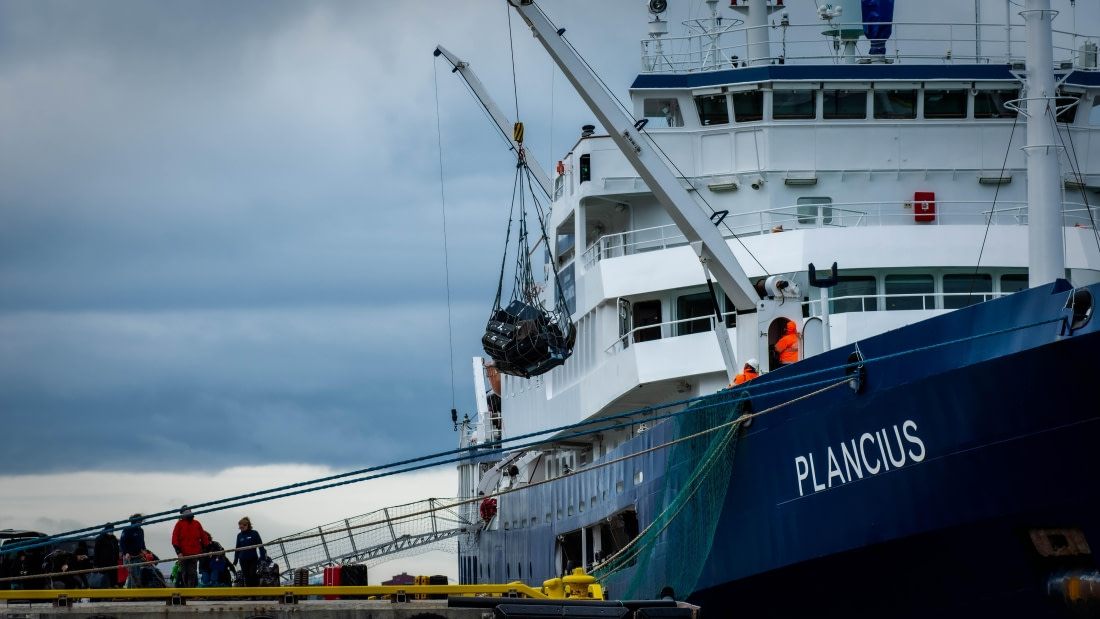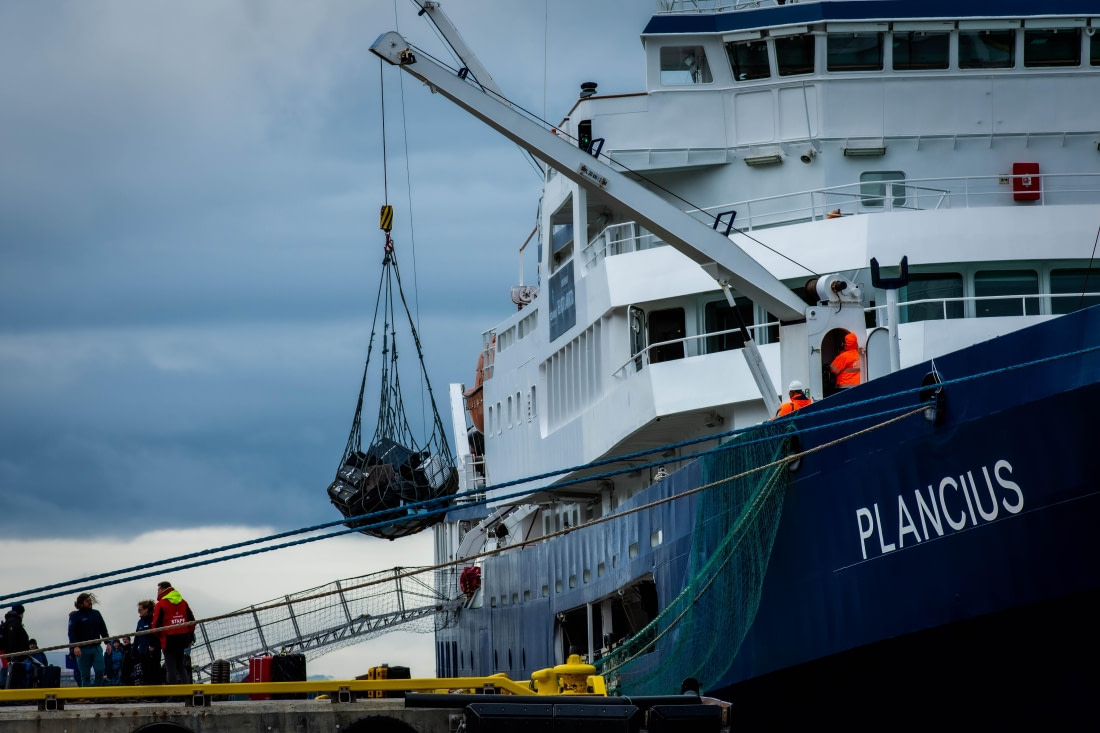| Datum: |
28.06.2024 |
| Position: |
79°45.3’N / 010°57.1’E |
| Wind: |
W4 |
| Wetter: |
Overcast |
| Lufttemperatur: |
+3 |
It was a restless night’s sleep for many, due to the motion of Plancius in the swell off the west coast of Prince Karls Foreland. We headed north throughout the night, aiming to make good progress to our first planned destination in Raudfjord.
However, not long after our walk-up call, our expedition leader came over the PA system informing us of a polar bear on our port side! We have never jumped out of our beds so quickly after a bad sleep. With layers piled on, we rushed to the outer decks to see the charismatic wildlife that brings so many visitors to these cold, high latitudes.
We watched the bear move across the shores, casually swaying as it strode along the beach. Although the movement seemed slow, the progress was so rapid that we had to adjust our description to newly appearing guests on the deck. The rain did not bother us as we stood, gleefully watching the polar bear before breakfast on the first full day of our expedition!
After we had some time observing the bear, we moved on, heading north. Where we had seen our polar bear, at Sørgattet south of Danskøya, was still a few hours from our planned morning landing site. Therefore, we adjusted our plans in true expedition style and headed towards the plan B option for the morning.
Just as the mandatory briefings were about to begin, not one, but two bears were spotted on Amsterdamøya, a small island still not where we had planned to go. Major adjustments were made again. A short compulsory briefing was given by Phillipp in the lounge before we rushed into our layers and headed for the gangway. We piled into the Zodiacs, eager to get out on the water in the low cloud to search for the polar bears. By this stage we had our eyes on 4 bears! (and 2 puffins)
Two of the bears were playing at the shore when we arrived. As we watched we could see that it was a mother with a cub, probably just over 2 years old, nearly ready to leave his mother. He was being taught how to hunt harbour seals, a useful skill when there is a resident harbour seal colony in the next bay over.
A mother with a younger cub appeared over the low-lying rocks, highlighting to us how hard it can be to spot a polar bear in what appears at first to be flat ground. The mother and younger cub began to approach the two playing on the shore. Their vulnerability was clear with such a youngster and the older cub came from the water, to state his claim. After some exchange of glances and altering course, the older cub and mother headed towards the carcass which lay along the beach.
It was an incredible serious of behaviours which we were able to observe. Everyone returned to Plancius with beaming smiles, discussing the activities we had witnessed and the other significant wildlife and history of this area on the east side of Amsterdamøya called Smeerenburg.
After a quick stopover on board for briefings and lunch, it was time to head off again. Eventually making it to our planned morning landing site – not that we would have changed a thing from our rescheduled morning!
Alicehamna is a beautiful site on the east side of Raudfjord. This fjord has spectacular dramatic scenery on the west coast and conveniently accessible rolling mountains on the eastern side. We landed near a small hut from the late 1920’s built by Stockholm-Sven, as he is locally known. The more recent renovations have left the hut in good condition for visitors like us and those seeking an emergency shelter (not us).
We divided into groups to satisfy our interests; whether that be to have a good hike with superb views, a shorter hike with fascinating talks or a short stroll with plenty of information and discussions around what we could see.
Back at the landing site we readjusted lifejackets and headed back to Plancius. Before a delicious plated dinner, we had a final recap to round up this unbeatable first day in Spitsbergen!

